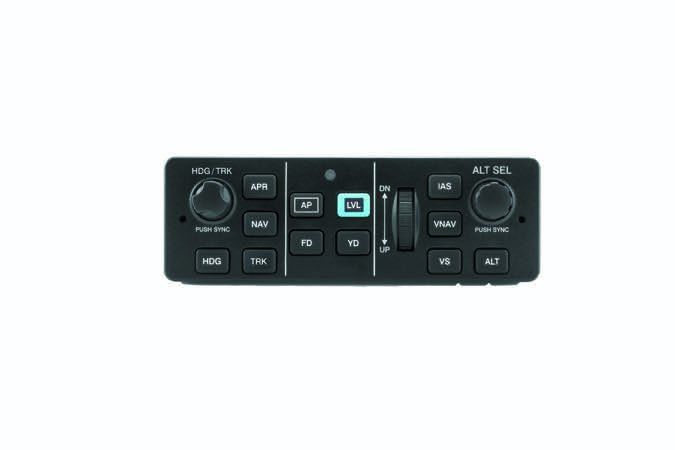While all eyes were on TruTrak and Trio this past year (both were knee-deep in earning STCs for experimental autopilots), Garmin was quietly working on its own retrofit autopilot. Actually, the company already had two: the one that’s integrated within the G3X experimental avionics suite, plus the impressive GFC700 that’s built into the G1000 and G3000 integrated avionics.
The technology in these systems ultimately trickled down to two retrofit autopilots—the entry-level GFC500 and higher-end, clean-sheet GFC600—both of which currently have limited STCs for aftermarket retrofit, but more are in the works. We recently flew with both of them during a visit to Garmin’s flight ops in Olathe, Kansas. Here’s a flight report.
GFC500
Most of the GFC500’s components have been flying in a variety of experimental and LSA models. In these applications, the G3X Touch and G5 EFIS—which Garmin got STC’d in response to Dynon’s approved D10A—are the primary displays in the autopilot interface. We called it early on that the G5 would be integral to an STC’d autopilot and it finally is.
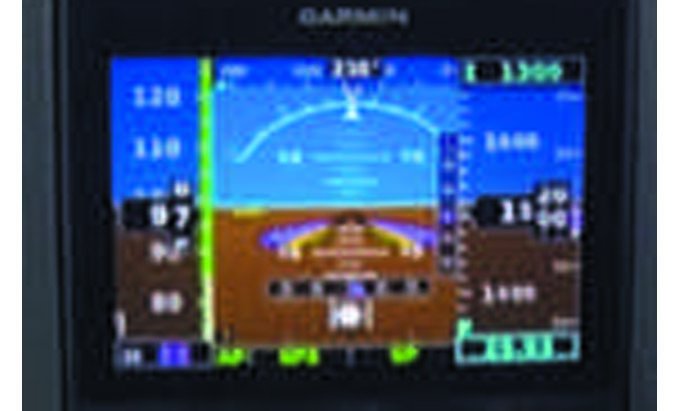
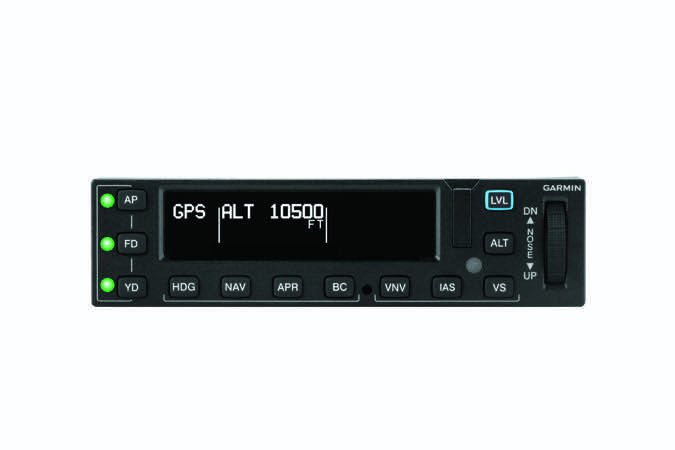
Garmin was dinged for releasing the STC’d version of the G5 without an autopilot interface, and it put some buyers on the fence impatiently waiting for third-party autopilot compatibility and with any luck, an approved autopilot. Garmin announced both at AirVenture last month.
Indeed, the GFC500 autopilot has a rich data interface with the G5. The instrument also channels in pitch and roll reference to the GMC507 electromechanical mode controller, which sports controls that are just the right size, even in turbulence. Like the hardware in higher-end Garmin autopilots, the GMC507 controller has intuitive ergos—the way an autopilot control head has to be. The two knobs you use the most—heading command and altitude select—are located on each side of the front bezel, while a thumb wheel that adjusts the aircraft’s pitch, airspeed and vertical speed is located near the center.
The G5 also serves as the autopilot’s mode annunciator and for inputting flying commands like altitude changes and setting vertical speed and indicated airspeed holds. The system also has a flight director, so the magenta-colored command bars are placed over the G5’s attitude display.
Not all interfaces will be equipped with it, but the GFC500 supports an electric trim servo for automatic trimming. Without it, the system has trim prompting. When the system senses the controls are out of trim, it prompts you to hand-trim the old-fashioned way. The trim prompter warnings are difficult to miss—they pop up in bold inside of a text in a box that’s on the G5’s attitude display.
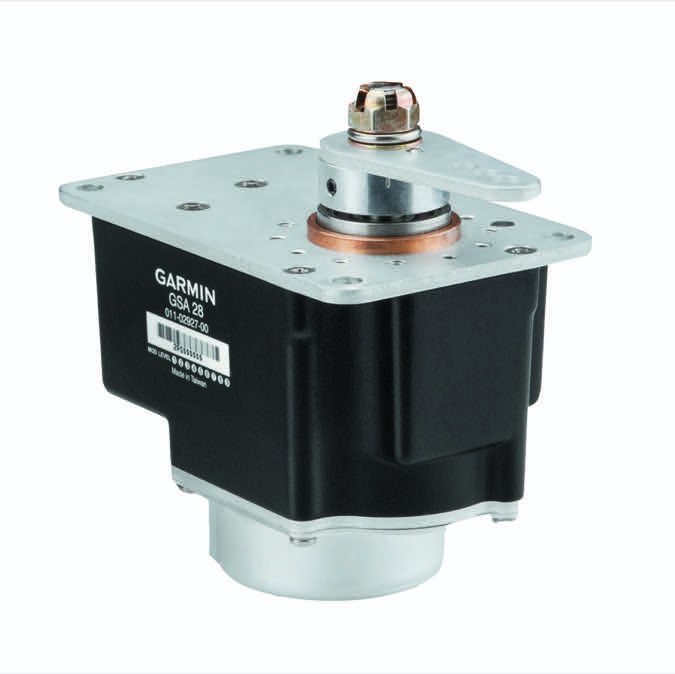
But getting the computing and input gains just right is only half the battle in engineering an autopilot that should fly the airplane better than a human. The GSA28 servos (roll, pitch, trim and yaw) are the components that do the heavy lifting. When we flew it this past July, Garmin’s Cessna 172M STC airplane wasn’t equipped with the autotrim (or yaw damper) and we don’t think the airframe needs either. Trim it yourself and save on the installation and component costs.
The GSA28 “smart” servos have earned Garmin sizable respect in the experimental market. They use brushless DC motors and don’t have a mechanical clutch and shear pin arrangement for slipping the controls during pilot override. Instead, there’s a geartrain and internal engagement clutch that allows for backdriving the motor. In the Skyhawk, we were able to slip the servos with one finger both in cruise and in approach configurations.
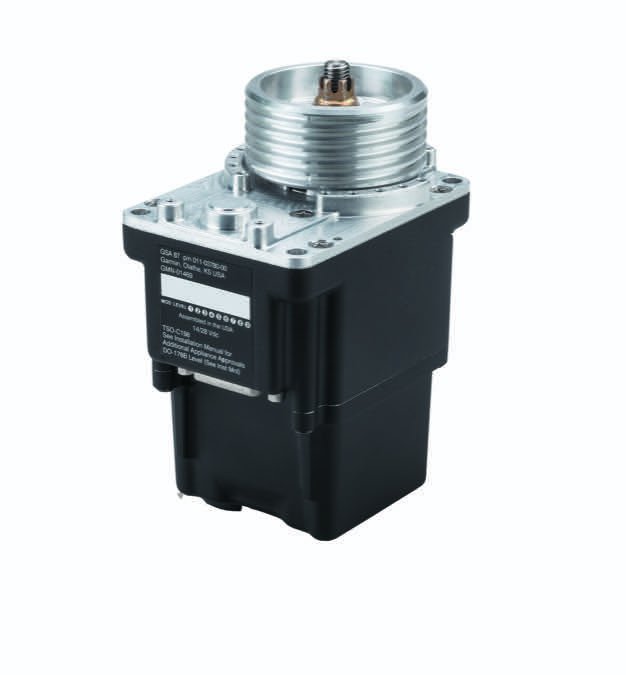
The other benefit that was noticeable to us, compared to vintage S-TEC-equipped models we’ve flown, is the servos induce no noticeable control friction while hand flying. That’s because the engagement clutch decouples from the servo motor when the autopilot is off.
On a side note, autopilots fly only as good as the aircraft is rigged. Good installers will know to check the aircraft’s control cable tensions and overall health. Ask if yours needs rigging and be prepared to pay some shop labor to get the control cables and pulleys in shape. The investment is worth it, from our experience.
Envelope Protection and Nav Coupling
There’s plenty of it built in and the GFC507 controller has a get-me-out-of-this LVL (level) button. Jab it and the autopilot levels the wings. We got aggressive with it in the Skyhawk, rolling the wings way over and pitching the nose down, but a push of the LVL button straightened things out in short order. Be ready to reduce the power before attempting a save when at cruise airspeeds, especially when the nose is down, because there’s at least some delay before the vertical speed returns to zero.
Also standard is Garmin’s ESP, for electronic stability and protection. Like in Garmin’s GFC700 system, ESP works in the background and is independent of the autopilot’s mode controller.
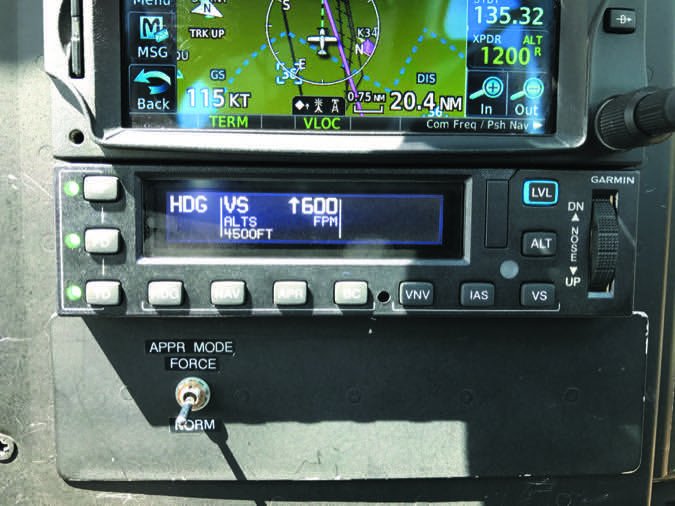
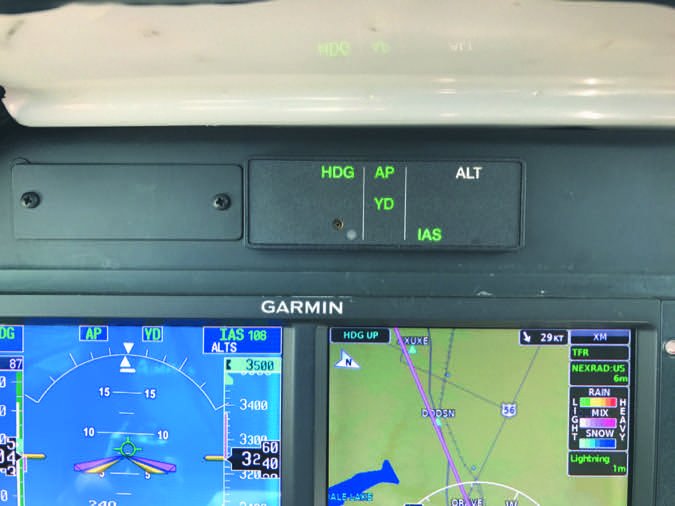
For example, if preprogrammed airspeed, attitude and bank angles are exceeded (based on the aircraft’s flight envelope), the system inputs light control force in an attempt to nudge the controls back. In the Skyhawk, we thought the ESP prompts could have been more pronounced, although Garmin says the forces get stronger the farther the aircraft strays from the set limits. And should you miss them and things really get out of hand, the autopilot engages with the flight director command bars in the level mode.
We like that ESP can be easily turned on or off. Think about it: You don’t want ESP engaging while you’re intentionally throwing the airplane around, like when practicing unusual attitude recovery and stalls. The ESP is turned on or off from a shallow menu in the G5 display.
The GFC500 has full lateral and vertical approach capture and tracking, plus VNAV (vertical nav) for flying vertical flight plan profiles. It’s activated with a dedicated VNAV button on the GFC507 controller.
Interfacing with a GPS navigator, including Garmin’s GTN-series touch systems, requires the GAD29 navigation adapter, which is wired in-line with the G5 flight instrument. It’s also required when connecting the autopilot to the GNS430W/530W GPS units. The adapter isn’t required with Garmin’s GNC255 navcomm radio; it’s wired direct without the converter. The GAD29 is priced at $499 and installation might take a couple of hours.
Garmin says the initial STC for the GFC500 (in the Cessna 172) is expected to be completed in the last quarter of 2017, with an STC for the Cessna 182 and Piper PA-28 series to follow.
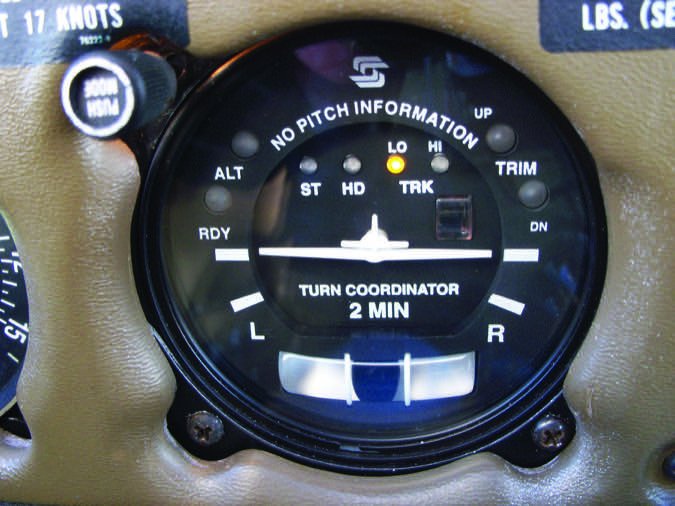
The system has a base price of $6995 for the two-axis configuration and doesn’t include the G5 attitude and G5 directional instruments. The primary attitude indicator is $2149 and the G5 heading indicator is $2449. Add all that up and the system comes in at around $12,000, without installation. It goes up from there with major options. If you want the pitch trim kit, it’s an additional $2100, including the installation kit, plus the yaw damper is $1500.
G5 To Get Third-Party Interfaces
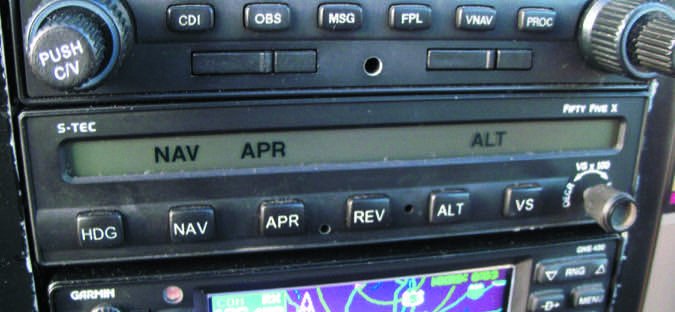
There’s a wider market for Garmin’s G5 electronic directional instrument than Garmin’s new GFC500 autopilot. What buyers really want is G5 compatibility with legacy autopilots. This is S-TEC, BendixKing, Century/Piper and ARC Cessna systems. Garmin says it’s working on an amendment to the G5’s STC to make it so. It will require the GAD29B adapter, which will allow for heading command and nav tracking, plus roll steering when connected to the GNS430W/530W and GTN navigators. Garmin didn’t give a date for the approval.
Higher-End GFC600
Unlike the budget-based GFC500, the flagship retrofit GFC600 is a clean-sheet autopilot that Garmin built to TSO standards. The focus isn’t entry-level aircraft, but instead high-performance piston singles and twins. As we go to press, Garmin has received an FAA STC for the system in the Beech A36 Bonanza and B55 Baron. For this report, we flew with the GFC600 in Garmin’s Bonanza.
Interestingly, the attitude-based GFC600 was designed as a standalone system, although it works with Garmin’s G500/600 PFD, plus third-party retrofit EFIS systems including the Aspen Evolution. Garmin also lists compatibility with mechanical HSI systems, including the venerable BendixKing KCS55A and Century NSD360A. It also works with Sandel’s SN3500/4500 EHSI, plus it can play with some mechanical directional gyros that have a heading bug.
The backbone of the system is the GMC605 mode controller, which is designed for mounting in the radio stack. The controller is unique in the world of autopilots because it contains internal flight data sensors that calculate the aircraft’s attitude and doesn’t rely on an external attitude source. Still, the system requires airspeed and baro-corrected altitude input, which it can source from an external air data computer (including the one used with Garmin’s G500/600 PFD). Garmin offers a small air data module for interfaces where an air data computer isn’t available, but we think a large number of installations will include the G500/600.
Baro-corrected altitude input is a big plus for any autopilot. With your current autopilot, how many times have you been given a fresh altimeter setting and had to rejigger the altitude hold so it matches? With baro-corrected altitude input, the autopilot synchronizes with small changes in altitude that result from an updated altimeter setting.
The GMC605 provides autopilot and flight director mode selection buttons and a thumb wheel for adjustment of the pitch, airspeed and vertical speed references. Mode annunciation is via a backlit monochrome LCD display that we found was a good performer in bright sun, although in the Bonanza it was mounted at the very bottom of the radio stack—we’d want it up top.
For some installations where the autopilot controller is placed outside of the pilot’s field of view (and when there is no PFD to display the autopilot modes), the GI285 annunciator panel is used. This is a high-quality panel with excellent sunlight readability and better yet, its footprint is similar to the mode annunciator used on the vintage King KFC200 autopilot—an aged system with sizable potential for replacement with the GFC600, in our view.
The GFC600 uses the beefier GSA87 servos, which are nearly identical in mechanical design to the GSA28 servos used in the GFC500, but have a chassis build that’s more tolerant of harsh conditions.
Displays and ERGOS
Garmin wisely included third-party PFDs and HSIs in the GFC600 interface, in addition to its own G500/600. The GDU620 (that’s the display used in the G500/600 system) shows the autopilot’s mode annunciation and alerts, plus it displays flight director command bars. It’s also used for altitude preselect and heading command, plus the ESP circuitry uses the display for bank limit reference.
Since the command bars can be displayed when the autopilot is flying or not, hollow magenta bars indicate that the pilot is following the cues, and solid bars are shown when the autopilot is doing the flying.
When an Aspen Evolution PFD is used, it too displays the command bars, plus it controls the heading command and provides full nav coupling, including GPS steering.
We found that the GMC605 controller has good ergonomics and the onscreen data is spread out in a logical manner. For example, the left side of the bezel houses three color LEDs located adjacent to the AP (autopilot engage), FD (flight director on/off) and YD (yaw damper on/off) buttons, so there’s never any guessing which is engaged. They illuminate in green when active. Disconnect the yaw damper (and the autopilot, for that matter) and the LED for each mode will flash yellow in return. Red is used to indicate an abnormal disconnect or failure condition. There is also an audio panel interface for aural alerting.
The left side of the main LCD screen shows lateral flight director modes, the center portion of the display provides vertical modes and references and the right side of the display serves as a message area for autopilot status and alerts. Active modes and references are depicted in large letters along the upper portion of the display, with armed modes in a smaller font along the lower portion. The message area can display up to four messages simultaneously.
The GI285 remote annunciator is smarter yet and can illuminate in multiple colors, plus it has flashing annunciations when there’s something that requires immediate attention. The active autopilot modes are depicted in green and armed modes are in white. Yellow is used to indicate when an active mode is dropped automatically by the autopilot. We like that the pitch trim annunciation is displayed in yellow during a trim failure (or when a mis-trim has occurred) because gone unnoticed, trim failures can be a killer, especially in aircraft with heavier control forces.
Right On The Money
That’s what we remarked when flying with the GFC600 in the Bonanza. The system was we’ll suited for the aircraft’s relatively heavy controls, yet responsive handling. Slow speed, high speed and approach speed—the GFC600 flew the aircraft like it was on rails—just as we’re accustomed to with the integrated GFC700.
Particularly impressive was the precision with which the system flew GPS RNAV approaches in the moderately bumpy Kansas air. You know, one of those bounce-around days where your hands are inches from the yoke as you backstop the autopilot. And should you need to step in, the system has control wheel steering. Pressing the external CWS button disengages the pitch and roll servos so you can position the airplane where you want it. Release the button and the servos engage. You can also override the servos by hand, of course.
There’s a considerable amount of envelope protection, with plenty of visual and aural clues to get your attention. Like the GFC500, the GFC600 has a Level mode, plus the ESP is always working in the background.
There’s also sizable automation when the system is connected with a GTN750 or 650 navigator, including a coupled go-around mode when executing a missed approach. You have to load the missed approach procedure in the navigator, but the autopilot is smart enough to pitch the command bars for the appropriate climb attitude for flying the missed, while also activating the missed approach procedure in the GTN. This saves you the extra button pushing. The lower-end GFC500 has the same function, but both systems require an external go-around button.
Moderate Price
The GFC600 has a starting price of $19,995, and $23,995 with electric pitch trim. Garmin said it’s currently evaluating more aircraft models to add to the limited AML-STC. In our estimation, it might be tough to decide which airframes might be appropriate for the lower-priced GFC500—a system that’s no slouch when it comes to performance.
Last, Garmin has competition and not just TruTrak and Trio. Both Genesys Aerosystems (S-TEC) and BendixKing announced fresh models, but neither have an STC yet. Based on our trials, they’ll need to work hard if they want to compete with Garmin’s impressive-performing autopilots and the aggressive dealer network that will push them.

